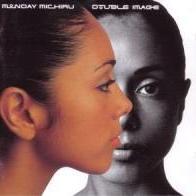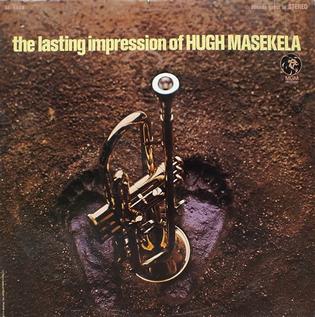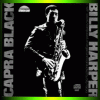All Activity
- Past hour
-
Very cool. Thanks for sharing this info!
- 1 reply
-
- cootie williams
- duke ellington
-
(and 1 more)
Tagged with:
-
Steve Bowie started following Concerto for Cootie, The Life and Times of Cootie Williams
-
RELEASE DATE - 17 NOVEMBER 2025 The first full-length biography of a true giant of jazz Description Jazz legend Cootie Williams left home to start his career as a professional musician at the age of fifteen. In 1940, after eleven years as one of the major soloists with the Duke Ellington orchestra, Williams was lured away to the band of Benny Goodman, one of the most popular bands in the country. At the time, it was a controversial move—it was still taboo for African Americans to share the bandstand with white people. Current references to the move usually reduce it to a song written by Raymond Scott, "When Cootie Left the Duke." In reality, it was a seismic event. The Black press predicted Black bands would collapse from raids on their ranks. White musicians were afraid they would be put out of work. And the white press stirred up visions of Black musicians mixing with white women in the new landscape of integrated orchestras. The twenty years trumpeter Williams spent as a band leader (1942-1962) have been covered in only the barest of details. His involvement in politics and the civil rights movement have not been detailed before. An astute talent scout, Williams and his band launched the careers of Eddie “Cleanhead” Vinson, Earl “Bud” Powell, Eddie “Lockjaw” Davis, and Pearl Bailey. He also was the first to record the music of a young Thelonious Monk, using two of Monk's compositions (“Epistrophy” and “‘Round Midnight”) as theme songs for his band. Steven C. Bowie respectfully tells Williams’s story, from his Alabama ancestry onward, including many new details rediscovered from the historical archives of the African American press and those gleaned from the author’s interviews with his friends and colleagues.
- 1 reply
-
- cootie williams
- duke ellington
-
(and 1 more)
Tagged with:
- Today
-
James Brandon Lewis: Apple Cores Meant to post this as a CD.
-
Maybe he was a bit tired about the business part. He preferred the comfort of having a label situated close to his home. Besides that I don't think Norman Granz would have featured Tjader - he had Milt Jackson, and Tjader never was that close to the JATP vibe that permeated Pablo. Duncan Reid has a more favourable view of Zaentz in this respect. Read the book. Duncan deserves a few more sales for his work.
-
I approved a few "iffy" looking accounts today. I hope we don't get spammed like crazy but it's a chance we decided to take. I also blocked/banned several new accounts using the https://www.stopforumspam.com website, which tracks spammers' digital footprints.
-
Slept in late this morning. Hardly never happens, feels a bit weird! It got really cool last night–it’s 56 degrees right now! Listening to Bob Dylan “The Cutting Edge Collector’s Edition” disc 12
-
The Phil Woods Quintet: Heaven. BlackHawk/Bellaphon BKH 50401 CD [West Germany 1986] Personnel: Phil Woods (as, cl), Tom Harrell (tp, fl-h), Hal Galper (p), Steve Gilmore (b), Bill Goodwin (dr)
-
https://open.substack.com/pub/lorenschoenberg128589/p/todays-jazz-potpourri?utm_campaign=post&utm_medium=post viewer https://www.jazz88.org/Player.asp?f=JP072025&p=https%3A//www.jazz88.org/programs/Jazz_Potpourri/%3Futm_source%3Dsubstack%26utm_medium%3Demail%23Jukebox&s=Jazz Potpourri%2C broadcast 07/20/25- Let's Swing!%26nbsp%3B&d=7182
-
-
-

What Classical Music Are You Listening To?
Referentzhunter replied to StarThrower's topic in Classical Discussion
-
-
-
PM for: Charles Lloyd Quartets- (ECM)- Opened. Back of box shows shelf wear. Otherwise it is in excellent condition. $20 $15
-
I'm not sure that Zaentz had the same level of respect for old-school musicians like Tjader as he did for Rock Star Cash Cows like Fogerty.
-
Obviously he didn't consult John Fogerty first. I guess it makes sense that he would go back to Fantasy, as Pablo hadn't started up yet.
-
For nearly five decades, Kazuo “Kaz” Kajimura ran the pre-eminent jazz venue on the West Coast, hosting legends of the genre: Ray Brown, Betty Carter, Hank Jones, Tito Puente. But visitors to Yoshi’s Jazz Club likely wouldn’t recognize Kajimura as the owner of the club. Six days a week for 50 years, he biked to his job, and stayed largely behind the curtain—building and arranging furniture to create clear sightlines for audiences, fixing leaky toilets, planning artist residencies, clearing tables and picking musicians up from the airport. When friends would ask Toshi Holland, Kajimura’s sister, how they could meet the club owner, “I’d tell them, ‘Find a very tiny Japanese guy who looks like the janitor,’ ” she said. “He was wearing beat-up jeans with dirty hands, because he was always fixing something. That’s my brother.” The club became proof of how a jazz club could endure, both as a waypoint for generations of artists as they toured the West Coast and as an anchor for the local scene. “To have a club like Yoshi’s, with national touring artists in six or seven days a week, and for it to be profitable, that’s an achievement in and of itself,” said Jason Olaine, vice president of programming at the Jazz at Lincoln Center organization in New York, who worked as the artistic director at Yoshi’s in the early 1990s. “Yoshi’s is a symbol of how a community can support jazz,” Olaine said. Kajimura died of Alzheimer’s disease on June 15 in Brentwood, Calif., at the age of 81. He is survived by his wife, Dadre Traughber, and four sisters. More here: https://www.wsj.com/arts-culture/music/kaz-kajimura-dies-bay-area-jazz-club-46c974ea?st=YV81yt&reflink=desktopwebshare_permalink
-
Too Much - Netflix, episodes 1 & 2.
-
.jpg.74a8b4abc7779f03e7e55653a1d9537d.thumb.jpg.a9eb0c1a66878897c11d43b00b49bdc0.jpg)
ebay madness re: vinyl
clifford_thornton replied to slide_advantage_redoux's topic in The Vinyl Frontier
Yep! That’s the ticket. -
That’s too bad; I never saw him, but enjoyed his playing. 87 makes sense if he was working with Sam Rivers in the mid 60s.
_forumlogo.png.a607ef20a6e0c299ab2aa6443aa1f32e.png)
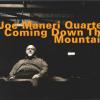
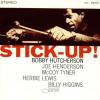



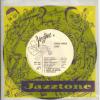



.thumb.jpg.5d7419b158b7f25187421cca349db119.jpg)
